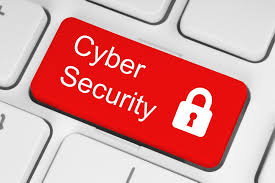New Cybersecurity Challenges

Before we address the upcoming cybersecurity challenges, let's first define the term. Cybersecurity is just a new buzz name for computer and network security which has existed for many years. However, due to the global Internet connectivity of many devices and networks, the computer security risk landscape has expanded and is frequently referred to as cybersecurity.
The computer security risks will continue to evolve as we change the way we use technology. For example, explosion in the number of smart phones and connected portable devices, widespread social media acceptance and proliferation of personal data, Bring Your Own Device (BYOD) policies of companies which allow employees to use their personal phones and devices for business purposes to save cost, as well as cloud storage and computing will continue to introduce new risks.
To better understand the evolving cybersecurity challenges, let's first imagine how our world is evolving. Although we may not all immediately agree on the details of the following, we can all generally agree that the arrival of smart and flying cars, self-improving robots, artificial or augmented intelligence such as IBM Watson, and multitude of connected devices also called the Internet of Things (IoT) is inevitable.
Drones are already here in limited numbers and used for delivery, farming, imaging, and competitive games. But drone capabilities and numbers are expected to grow. FAA predicts that drones will be a $90 billion industry within a decade. And Gartner estimates there are 6.4 Billion Connected "Things" today which are expected to grow to 21 billion by 2020 out of which over 13 billion will be household devices used by consumers.
These connected and smart devices will be able to perform many tasks on our behalf and will carry a ton of data thanks to the ever increasing data storage capacities of devices and decreasing costs.
Cybersecurity Challenges
Now let's talk about the cybersecurity challenges in the upcoming years. Technology advancement and data proliferation in an automated and connected world in which sensors collect and share data such as smart windows that share data on outside and inside temperatures to control the heating and cooling systems, and other smart devices that perform tasks on our behalf will make the security and management of Identity of Things (IDoT) very challenging.
Data privacy and security concerns will continue to be of utmost concerns, especially, the definition of identity theft will be expanded to include device identity takeover by another device.
Also, it is estimated that there will be a shortage of cybersecurity experts. According to a recent study by Intel Security, in partnership with the Center for Strategic and International Studies (CSIS), the global cyber-security workforce will have 1 to 2 million jobs unfilled by 2019. In the US alone, about 209,000 cybersecurity jobs were unfilled in 2015 according to the report.
According to Identity Management Institute (IMI), proper management of device identity, security, connectivity to other devices, access, data sharing, and authorization to perform tasks will be crucial in the new tech world.
Visit IMI website to find solutions for your cybersecurity challenges.








